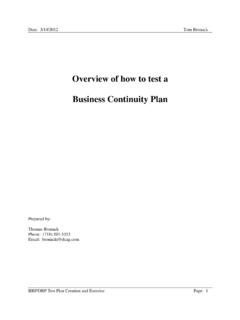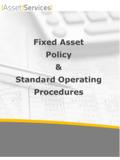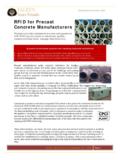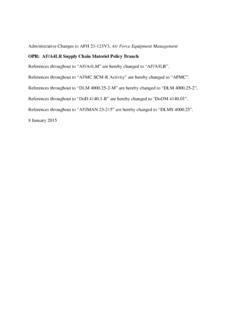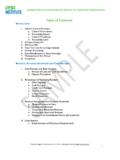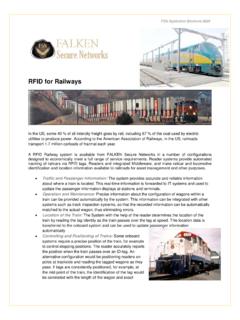Transcription of Inventory Management System - DCAG
1 Inventory Management System Release Date: March 18, 2012 Prepared by: Thomas Bronack Standards and Procedures Manual Inventory Management Page: Section Table of Contents 1. Inventory Management .. 4 INTRODUCTION TO Inventory Management .. 4 DEFINITION .. 4 SCOPE .. 6 MISSION .. 7 OBJECTIVES .. 8 FUNCTIONAL AREAS.. 9 INTEGRATED Inventory Management System .. 10 SMC DISCIPLINE INTERFACES .. 11 Inventory Management DISCIPLINES AND INTERFACES .. 13 PROCESS DESCRIPTION.
2 14 NETWORK .. 14 System .. 14 Inventory Management PROCESS .. 15 Inventory Management FLOW .. 16 PROCESS FLOW.. 17 1. NON-CONTROLLED ACR ENTRY: .. 17 2. CONTROLLED ACR ENTRY: .. 17 IMPLEMENTATION OF Inventory Management .. 18 System ENVIRONMENT .. 18 NETWORK ENVIRONMENT .. 19 DATA REQUIREMENTS FOR Inventory Management .. 20 Inventory Management DATA MODEL .. 21 COLLECTING, MONITORING AND REPORTING 25 Inventory Management RECORD HIERARCHY .. 26 DISCIPLINE RELATIONSHIPS .. 27 BUSINESS FUNCTION INTERFACES.
3 27 System Management INTERFACES .. 29 Inventory Management TOOLS .. 30 ASSET Management AT THE System TO SERVER LEVEL .. 30 INDUSTRY STANDARDS .. 32 DOWNSTREAM NETWORK SERVER CONFIGURATION AND Inventory Management .. 34 ROLES AND RESPONSIBILITIES .. 36 Inventory MANAGER .. 36 Inventory CLERKS .. 36 PROCESS EVALUATION .. 37 PRESENT System WEAKNESSES .. 37 RECOMMENDATIONS FOR IMPROVEMENT .. 37 Standards and Procedures Manual Inventory Management Page: Section List of Figures FIGURE 1: OVERVIEW OF Inventory Management FUNCTIONAL AREAS.
4 9 FIGURE 2: OVERVIEW OF AN INTEGRATED Inventory Management System .. 10 FIGURE 3: SMC DISCIPLINE INTERFACES .. 11 FIGURE 4: Inventory Management System - OVERVIEW OF PROCESS .. 15 FIGURE 5: Inventory System FLOW DIAGRAM .. 16 FIGURE 6: Inventory Management DATA MODEL .. 21 FIGURE 7: Inventory Management RECORD HIERARCHY .. 26 FIGURE 8: ASSET Management AT THE System TO SERVER LEVEL .. 31 FIGURE 9: DOWNSTREAM NETWORK SERVER AND Inventory Management .. 34 Standards and Procedures Manual Inventory Management Page: 1.
5 Inventory Management Introduction to Inventory Management Definition Inventory Management is an enterprise-wide discipline concerned with the identification and tracking of Information Services (IS) hardware and software assets. Its three main areas of concern are: Acquisition. Redeployment. Termination. Acquisition procedures are established to assist personnel in procurement of software and hardware products. Its main purpose is to ensure that proper justifications are performed and that financial guidelines are followed.
6 Redeployment procedures are responsible for ensuring that assets are tracked when moved from one location to another and that budgetary considerations are adjusted as needed. Should a product be moved in conjunction with its original owner then the Inventory System is updated to reflect the new location. Should a product location and owner change, then the Inventory System must be updated to reflect the new owner and their location. In this case, the old product is deleted from the original owner's budget and added to the new owner's budget.
7 Termination is responsible for deleting the asset from the Inventory when it is discontinued, or replaced. The owner's budget will be updated to reflect the asset termination and the asset will no longer be listed when location reports are generated. The Inventory System is maintained within a database that ties an asset to its owner and defines the location where the asset resides. The relative importance of the asset is added to the Inventory record ( , Criticality = 1-5, where 1 is "Most Critical"). Based on this information the contingency planning specialist can plan asset recoveries needed to support critical business operations.
8 Standards and Procedures Manual Inventory Management Page: Like all databases, the Inventory System will only be effective if its information is kept current. To ensure the accuracy of the Inventory System , while not adding too great a burden to company personnel, every effort must be taken to implement processes that maintain Inventory data with a minimum work effort from personnel Inventory Management provides: Up-to-date information about data processing resources through the creation and archiving of records in a centralized repository.
9 Financial records specific to a single component, or groups of components. Service records for all components in the Inventory . Data used to support configuration diagrams of the hardware and software components contained within specific locations, or the entire data processing environment. Standards and Procedures Manual Inventory Management Page: Scope The Inventory Management discipline encompasses all System and data network elements from the mainframe through the server level to the PC or end component throughout the enterprise.
10 All mainframe and data network based hardware and software assets must be identified and entered into the Inventory System . Any changes to these environments must be reflected in the Inventory System . Financial and technical product information must be available through the Inventory System , as needed to support the functional responsibilities of personnel within the finance and contracts Management departments. Asset criticality must be included with asset descriptive and financial information, so that the Recovery Management department is supplied with the information it requires.
